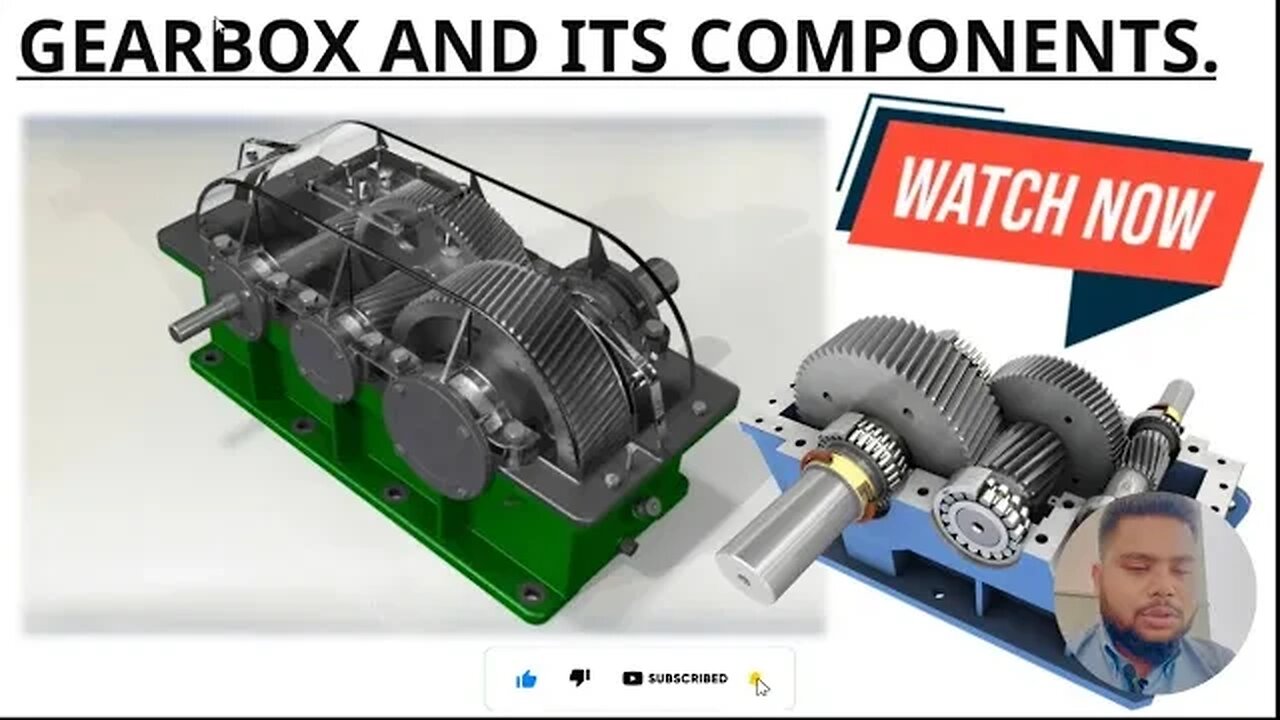Premium Only Content

Gearbox | Gearbox Components | #gearbox #gear #gears5 #learning #engineering #mechanical #drive
A gearbox is a mechanical device used to transmit power from one part of a machine to another by altering the speed, torque, or direction of rotation. Its primary components include:
Gears: Gears are toothed wheels that mesh together to transmit power. They come in various shapes and sizes, including spur gears (straight teeth), helical gears (angled teeth), and bevel gears (conical shape), among others.
Input Shaft: This is the part of the gearbox where power is initially introduced. It connects to the source of power, such as an engine or motor.
Output Shaft: The output shaft delivers power to the intended destination, which could be another machine component or a load.
Gearbox Casing: The casing or housing encloses and protects the gears and other internal components. It also contains lubricants to reduce friction and wear.
Bearings: Bearings support the rotating shafts and gears, reducing friction and allowing smooth movement.
Lubrication System: Gearboxes require lubrication to reduce friction and heat generation. Lubricants are typically oil or grease, and some gearboxes have dedicated systems for lubricant circulation.
Seals and Gaskets: These components help prevent lubricant leakage and keep contaminants out of the gearbox.
Shift Mechanism (if applicable): In manual transmissions, a shift mechanism allows the operator to select different gear ratios. Automatic transmissions use hydraulic systems for this purpose.
Synchronizers (in manual transmissions): Synchronizers help match the speed of the input and output shafts, enabling smooth gear engagement.
Clutch (in manual transmissions): A clutch is used to disconnect the engine from the gearbox temporarily, allowing for gear changes without stopping the engine.
Torque Converter (in automatic transmissions): In automatic transmissions, a torque converter replaces the clutch and helps transmit power smoothly.
Planetary Gears (in automatic transmissions): These specialized gears are used in automatic transmissions to achieve various gear ratios.
The specific components and their arrangement in a gearbox can vary widely depending on the application and type of gearbox, such as manual, automatic, CVT (continuously variable transmission), or others. Each type serves different purposes and offers unique advantages in various industries and machinery
-
 59:40
59:40
Trumpet Daily
18 hours ago $3.32 earnedAmerica’s Royal Family - Trumpet Daily | Jan. 21, 2025
5.18K12 -
 1:03:14
1:03:14
Bek Lover Podcast
11 hours agoInteresting Times with Bek Lover Podcast
1.71K1 -
 3:10:10
3:10:10
Price of Reason
13 hours agoTrump is BACK in Action! Elon Musk's Inauguration Gesture Draws MSM Fire! Disney Prepares For LOSSES
27.9K4 -
 2:08:22
2:08:22
Kim Iversen
12 hours agoIs This Even Legal? Trump’s Push to End Birthright Citizenship and The Insane Plan to Move Palestinians to Indonesia
127K252 -
 1:27:06
1:27:06
Glenn Greenwald
12 hours agoMr. Tracey Goes To Washington: Inauguration Observations, Interviews & Commentary | SYSTEM UPDATE #393
161K57 -
 52:01
52:01
Tucker Carlson
16 hours agoNew York Mayor Eric Adams Sounds a Lot Like a Trump Voter
234K215 -
 2:47:25
2:47:25
Right Side Broadcasting Network
15 hours agoLIVE REPLAY: President Donald J. Trump Holds First Press Briefing Since Inauguration - 1/21/25
255K214 -
 1:08:45
1:08:45
Man in America
14 hours agoTrump UNLEASHED! Dismantling the Deep State and Restoring America
58.2K74 -
 27:22
27:22
I_Came_With_Fire_Podcast
16 hours ago🔥SPECIAL RELEASE🔥 Inflation Reduction Act: American Seniors Get SLAMMED!!
75.7K11 -
 6:25:28
6:25:28
vivafrei
14 hours agoD.C. Gulag Jan. 6 Prisoners Release Watch!
243K113